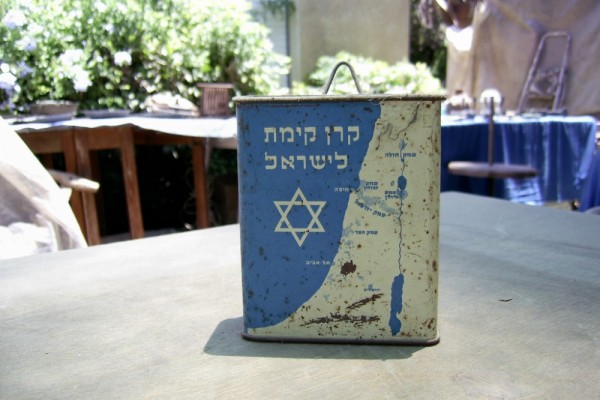Empire’s Ally
Canadian Foreign Policy
There has been much gnashing of teeth over Canada’s foreign-policy stance since the day Stephen Harper and his Conservative government was elected to office.
Canada’s relations with the U.S. on a phalanx of fronts have been at the centre of controversy.
One issue has been the softwood-lumber deal cut by Ambassador Michael Wilson, which limits Canadian lumber exports to the U.S. and allows the Americans to keep $1 billion in duties ruled by trade tribunals as illegal. This has been judged by the government as a necessary step to re-establishing “good” bilateral relations to secure and deepen economic integration.
A second has been Canada’s Middle East policy, in terms of the deployment of Canadian troops into a major combat position in southern Afghanistan, and the uncompromising support for the Israeli and U.S. positions on Israel’s summer assaults against Lebanon and Gaza.
American Geo-Political Strategies
It is a striking fact that the end of the Cold War did not lead the U.S. to dismantle its military empire and regional alliances. Instead, it extended them and added additional overseas military deployments under both the Bush-Republican and Clinton-Democratic administrations. A new American empire had emerged out of the debris of the Cold War system. It is a particular empire of global capital, operating through the hierarchy of the nation-state system dominated by Western capitalist interests, and the economic, military and diplomatic hegemony of the U.S.

This reorganization strengthened the role of the security and policing apparatuses in all dimensions of Canadian foreign policy. The Harper government has sought only to tighten these structures administratively, make the PMO the fulcrum for security and foreign-policy decision-making, and to push ahead the Fortress North America agenda, notably adding securing the Arctic to the mix.
Third, a new strategic framework for foreign policy has been evolving. The Chretien government’s Securing an Open Society: Canada’s National Security Policy (2004) moved away from Axworthy’s human-security agenda, and also took distance from the most vociferous dimensions of the Bush Doctrine. But it also aligned Canada with American security concerns and committed Canada to meeting the new U.S. security requirements. The International Policy Statement (2005) released by the Martin government and the NAFTA leaders’ Waco Declaration on a Security and Prosperity Partnership of North America (2005), however, aligned Canada more strongly with U.S. security and economic concerns. The Harper government has largely left these documents to the side, but Harper has pushed even more strongly in the direction they trace of more closely defining Canadian foreign-policy interests as tied to U.S. security concerns and imperial agendas to ensure Canadian capitalists’ access to U.S. markets for their goods and capital.
Finally, the Canadian military has been systematically renovated in its operational capabilities and its flexibility for overseas deployment. Canada has depleted its peacekeeping missions to almost nil, and has become by many tallies the third-largest contributor to the “War on Terror” after the U.S. and Britain. The Chretien budgets had begun to expand military budgets; Martin had in 2005 pledged almost $13 billion over five years; and the first Harper budget pledged an additional $5 billion beyond committed defense outlays. This has been for expanding troop levels, their operations in the “field” and new armaments. It is also matched by a shift in Canadian military doctrines toward “networked joint capabilities” and “inter-operability” for “multi-force, multi-country” operations. This essentially means improved capacity to support U.S. military operations in pursuit of its and Canadian imperial ambitions.
Canada and the Middle East
The Middle East has literally been the battleground where Canada’s new foreign policy has been foremost tested (although the western and Canadian intervention against democratic processes in Haiti is just as telling). The previous Liberal government had already begun moving to tie Canada closer to American and Israeli positions. This could be seen in the Martin government’s endorsement of Canadian military deployment for a combat role in southern Afghanistan and its break with the Chretien policy of “peacekeeping” in Kabul. But it could also be seen in the Martin government shifting UN votes following extensive lobbying by Zionist forces in Canada to side with the U.S., Israel and a few other American vassal states regarding Israel’s failure to uphold United Nations resolutions on Palestine and other human-rights issues. In November, 2005, Martin put this before the United Jewish Communities like this: “Israel’s values are Canada’s values.”
Rather than continuing Canada’s historical support for multilateralism and the international rule of law, Canada now openly defended the right of the U.S. and Israel to exercise unilateral military measures, and separated international rules on a host of issues for these two major “rogue” states. At the same time, Canada hypocritically followed the U.S. in holding North Korea, Iran, Venezuela and others to international rules and norms in pursuing various sanctions and measures against these states. According to Canada’s new foreign-policy position on the Middle East, some states have the right to extra-territorial sovereignty, while other states can exercise their sovereign rights only at the discretion of the major powers.
This is where the Liberals had already moved Canadian foreign policy (through a minority Parliament, with only minimal dissent from the NDP) before their defeat. Harper’s Conservatives have taken up these positions still more vigorously, continually invoking all the American clich s of how the world has changed since 9/11. On the fifth anniversary of the atrocity, Harper went so far as to identify it as an attack on Canada, and the various interventions in the Middle East as measures to prevent terrorism in Canada. Indeed, this has become the government’s principal justification for the extension of the Canadian mission’s mandate in southern Afghanistan. And it was invoked as the reason for the recent, September decision to increase Canadian combat troops and to deploy a new level of arms in the form of additional fighter jets and tanks with long-range firing capacities. The Harper government inherited the Afghanistan mission, but then went on to define it as a centrepiece of its government, partly on its own terms and partly in embrace of the American geopolitical vision.
It has done similarly on other Middle East issues. Harper made Canada the first nation to place sanctions on the newly elected Hamas government in the Palestinian territories. These sanctions became the trigger that began the escalation of hostilities in Gaza and the return of Israeli occupation. Canada has worked closely with the U.S., Britain and Israel to isolate the Palestinians, and to ignore the construction of the apartheid wall, the humanitarian disaster in Gaza and the continued Israeli development of illegal settlements. The Canadian response to Israel’s aggressive assaults on both Gaza and Lebanon this summer, in a manner that clearly violated international law regarding collective punishment, was more of the same.
Dissent and Democracy
It is clear that a majority of Canadians are increasingly uncomfortable with Canadian foreign-policy positions. Half the population consistently dissents from Canadian troops being in Afghanistan. Even higher poll numbers consistently register opposition to American policies more generally. They are rejecting the reckless and morally troubling foreign-policy position that Canada now endorses.
There is a growing contradiction between the desires of the Canadian people for an “independent foreign policy” and the alignment with American imperialist and security objectives. This desire is also at odds with the imperial agenda that has formed in Canadian business and state elites. This has made them one of the Empire’s strongest allies.
This article appeared in the November/December 2006 issue of Canadian Dimension (Canada: A New Imperial Power?).










